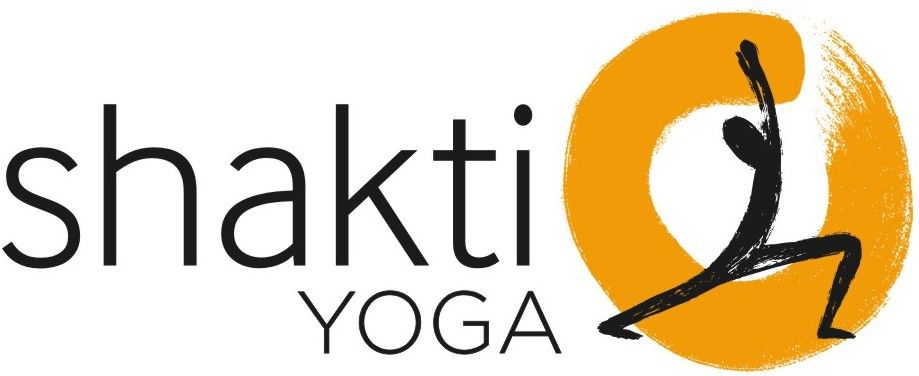Around the World… and Back to My Yoga Mat
An Unlikely Journey to becoming a Yoga Teacher
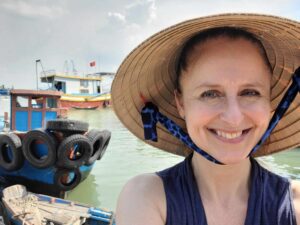
While many take a straightforward path to becoming a yoga teacher, mine was anything but. Thirty years ago, I was an avid runner living in Vancouver, and yoga held no interest for me. I thought it was only for people who couldn’t—or didn’t want to—handle more intense activity. That changed the day a friend mentioned a hot yoga class that her super-fit running buddy hadn’t been able to finish the night before. That piqued my curiosity-and set me on a journey I never expected.
At the time, hot yoga was just starting to make its way up the West Coast from Los Angeles. Classes were held in cramped, rented rooms in random apartment buildings, with sweat-soaked carpets and no showers. Fancy absorbent towels didn’t exist yet, and no one wore specialized yoga clothing. There were no studio signs-you simply had to know where the class was happening. Lululemon was still a tiny shop on 4th Avenue in Kitsilano, where the owners sewed clothing upstairs while customers browsed below.
It took just one sweaty, butt-kicking class to hook me. I started practicing daily-sometimes twice a day. My early-20s self loved the intensity of the hot, humid room. Wondering whether I would make it to the end of class only made it more exciting. The teacher’s instruction, explaining the physiological benefits of each pose, spoke directly to my science-loving brain. Eventually, I decided to pursue teacher training in this style-but just weeks before paying my deposit, my partner and I unexpectedly moved back to Japan.
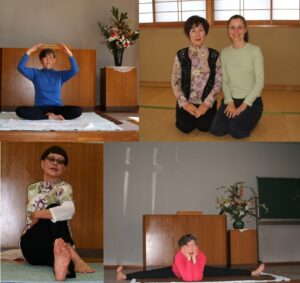
Once in Japan, the yoga classes I found were very different from what I was used to. They were slow-moving hatha classes held at local recreation centers, all taught by women in their 70s and 80s. At first, I wasn’t very excited to attend-but the strength, flexibility, and depth of these senior instructors quickly made me rethink my assumptions. Each teacher infused her classes with Zen meditation and philosophy, revealing a softer, deeper layer of yoga I had never experienced. (I also learned a surprising amount of Japanese-most of it, unfortunately, not very useful at the local izakaya.)
I joined a class each morning before work, hopping on trains and pedaling through rice paddies to reach a different center each day. A few years later, as we prepared to leave Japan, I reflected on how different my Vancouver hot yoga experience was from what I had learned there. I began to wonder: Was either “real yoga”? And if not, what was real yoga? Hoping for answers, I sent my partner home to Canada and bought an open-ended ticket to India.
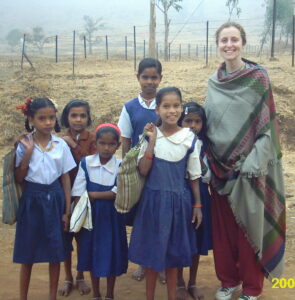
Flying from Tokyo to New Delhi, I entered a world without cell phones, texting, or widely available internet. In rural areas, I had to rely on village phones-some guy would dial the number for me at an outdoor stall and hand me the receiver, while children gathered around, repeating any English words they recognized and giggling.
After weeks of hopping trains across India, I arrived at an ashram in Maharashtra, near the holy city of Nashik. Beneath the mountain peak believed to be Hanuman’s birthplace, I completed my first yoga teacher training. It was the perfect place to connect with yoga’s roots. Each day was full: early morning meditation, two hours of asana and pranayama (twice daily), yoga nidra, lectures from local doctors and teachers, morning and evening aarti ceremonies, mantra, and locally grown Ayurvedic meals. That month flew by, and with my first teaching certificate and a heart full of gratitude, I began traveling north toward Rishikesh-the spiritual town on the banks of the Ganges where the Beatles famously studied in the 1960s.
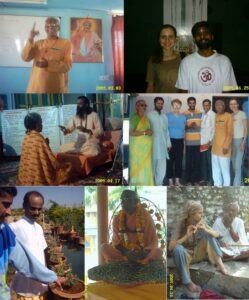
Rishikesh is a town alive with spirituality: the Ganges flows fast and clear from the Himalayas, and the streets are packed with ashrams, vegetarian-only food, swamis, and seekers from all over the world. I spent months exploring various yoga trainings until I eventually found a teacher who resonated deeply with where I was in life. I studied with him in his ashram until I felt it was time to return home.
Back in Canada, I began teaching yoga-first part-time, then through my pregnancies. When my maternity leave ended, instead of returning to my old job, I chose to teach yoga full-time and never looked back. Since then, I have returned to India multiple times to study with both old and new teachers and to become an Ayurvedic practitioner. I have also studied with teachers
throughout Canada and the United States. Every teacher has expanded my understanding of yoga.
For a time, I immersed myself in prenatal yoga and its impact on pregnancy and childbirth. Yin yoga brought skeletal variation and fascia into focus. Vinyasa flow allowed me to explore moving meditation. Neurogenic yoga added a therapeutic dimension. Over the years, each style has offered a new lens through which to understand the practice and its benefits.
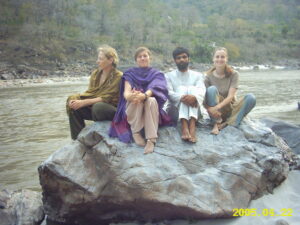
After thirty years of study, I have concluded there is no single “real yoga”—or more accurately, no “not-real yoga.” All styles, whether hatha, vinyasa, yin, neurogenic, or restorative, are real yoga. Each provides pathways for pranayama, meditation, and physical, mental, and spiritual wellness. Whether your goal is self-realization or physical strength, flexibility, and longevity, each style offers a way forward.
I am deeply grateful that my first teacher training taught me to approach every future study as an opportunity to explore yoga philosophy and self-understanding. From this perspective, every person, every yoga class, and every life situation can be a teacher. As Ram Dass famously said, “If you think you are enlightened, go and spend a week with your family.” What we practice on the mat prepares us for life off the mat.
Is my yoga always serene poses and peaceful meditation? No. Am I always calm and stress-free? Absolutely not. But yoga has helped me navigate countless difficult moments, and I cannot imagine life without it. Every teacher I have studied with has brought me full circle, shaping the way I now share yoga in my own teacher trainings. Today, I teach yoga teacher trainings both locally in St. John’s and internationally.
Are you interested in becoming a yoga teacher? Do you want to study with experienced teachers who have a broad understanding of modern and traditional yoga? Would you like to confidently teach hatha and/or vinyasa flow, understand how each style can be adapted for accessibility, or simply deepen your own practice?
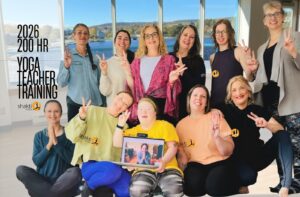
If so, I invite you to join me – Bobby Bessey – along with Shakti’s experienced core support instructors Linda Ivany and Carolyn Hapgood, and an incredible lineup of guest teachers, for the 2026 Yoga Alliance–Certified Shakti Yoga Teacher Training. This training takes place in the bright, beautiful setting of Boathouse Wellness on Quidi Vidi Lake.
The Shakti School of Yoga has been graduating talented and inspiring yoga teachers in Newfoundland and Labrador for over a decade. Perhaps the energy and enthusiasm of the Year of the Horse will help you leap over doubt and begin your own yoga teacher journey. This training is open to all body types, sizes, and ages, and requires only a love of yoga and an established personal practice.
If you would like to join me for the upcoming 2027 Japan Zen Yoga Study & Travel Retreat, or the 2028 India Traditional Indian Studies Study & Travel Retreat find more info at www.ShaktiYogaMethod.com
Articles
-
Shatavari Tea Especially Beneficial for Women
-
Healthy Chia Partridgeberry Jam
-
Two Reasons to Make Neurogenic Yoga a Regular Part of Your Life
-
Five Reasons to Study Yoga Nidra
-
Ancient Text Modern Relevence
-
Tips From a Chick on Using Stress to Get Healthier!
-
Calming Chocolate Date Bark
-
The Psoas, Sitting, and Stress Connection
-
Massaged Kale and Goat Cheese Salad
-
Around the World… and Back to My Yoga Mat
